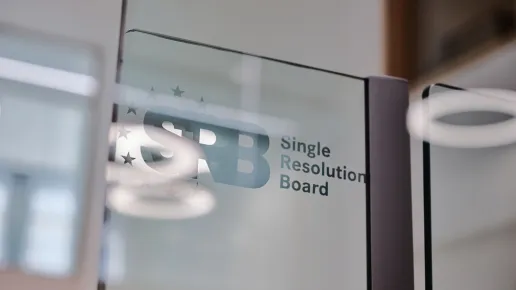In the past, some small and middle-sized banks fell between the cracks of the resolution framework. Resolution authorities were not able to resolve them, due to the current definition of the notion of public interest. Instead, with the announced objective to preserve financial stability, such banks were dealt with outside of resolution using public liquidation aid. As a result, while regional financial stability was indeed preserved, taxpayers had to foot the bill. The Crisis Management and Deposit Insurance proposal (CMDI) will help addressing this loophole in the framework.
CMDI, in fact, aims to expand the scope of resolution to a number of smaller banks – as most of the larger ones are already earmarked for resolution.
Resolution has, in fact, a number of advantages over liquidation. First, in resolution, the use of taxpayers’ money is explicitly ruled out. Also, for instance, when a failing bank reopens after the resolution weekend, customers keep access to its full range of services. This is not necessarily the case in liquidation.
This does not mean that all banks running into trouble should be resolved. Even after CMDI, liquidation will stay relevant for most banks. The Banking Union is home to around 2 000 small banks – the so called less significant institutions (LSIs) – and, even after CMDI, for the most part, liquidation will remain the preferred approach in case of crisis. So, resolution will not be the general case.
Also, CMDI will never be a free lunch. We will hold those smaller banks, entering in the scope of resolution, to the same standards as their larger peers, in a proportionate way. In this vein, the Minimum Requirement for Own Funds and Eligible Liabilities (MREL) will still be the first line of defence to absorb losses. A proof of the intense resolution planning work carried out on smaller banks can be found in our recent LSI report1. These “resolution LSIs” are advancing toward resolvability (including MREL compliance), in line with their larger peers. The same rules will apply for banks entering in the scope of resolution thanks to CMDI.
Nevertheless, resolution authorities will need a more flexible toolset to deal with the resolution of these smaller banks. This is why CMDI introduces an alternative way of funding a market exit for the bank in crisis, if it is in the public interest. CMDI, in fact, allows for the use of Deposit Guarantee Schemes funds (DGS), and possibly of the Single Resolution Fund (SRF), to facilitate “market exits”, funding the sale of the ailing bank to a solid acquirer. By doing so, CMDI also curtails the risk that some uncovered depositors would suffer losses and cause a bank run.
Some stakeholders are concerned that this proposal would be expensive for the industry – through an increased need to fund national DGS and the SRF. However, these concerns are overblown. Our estimations are reassuring2. Even if CMDI makes the possibility of using the DGS (and the SRF) more plausible, such use in resolution would have limited impact on their finances – and, in turn, on the banks. This is because, as mentioned above, MREL remains the first line of defence, and due to the relatively small size of the banks concerned. Besides being low cost, the DGS funding of a sale is a practical solution that has recently been contemplated also abroad.
The expansion of the scope of resolution and the use of DGS funding – the core of this proposal and the most debated issues – should be considered interconnected and mutually necessary. Expanding the scope of resolution without the source of funding would not work. If we are to take a decision to put a bank into resolution, we have to be certain we have the right tools. Otherwise, liquidation may become the only option.
Whatever compromise legislators may find on the sensitive issues around the creditor hierarchy, they should make sure it delivers the same results in terms of funding available for a resolution decision. To make it more concrete, if the legislators converge around multiple tiers for the depositor preference, then the least cost test, and its governance, have to be modified so that sufficient funding for resolution and alternative measures can still be unlocked in case of a need.
To conclude, the current framework works well and many of its aspects should not be modified. However, CMDI offers a great opportunity to legislators to make the crisis management toolkit more flexible, increasing trust and confidence in the crisis management framework. This opportunity should not be squandered or we risk going backwards to a more fragmented system, which would be particularly detrimental to the Banking Union.
Contact our communications team
Recent news

The SRB recently published two important documents clarifying its expectations of banks regarding operational resolvability: the Operational guidance...

The body responsible for managing banks in crisis in Europe is celebrating its 10th anniversary and claims that Popular's 2017 resolution has been...

In last June, Parliament and Council have clinched a political deal that is applicable to all the EU member states, and which can be seen as a step...



